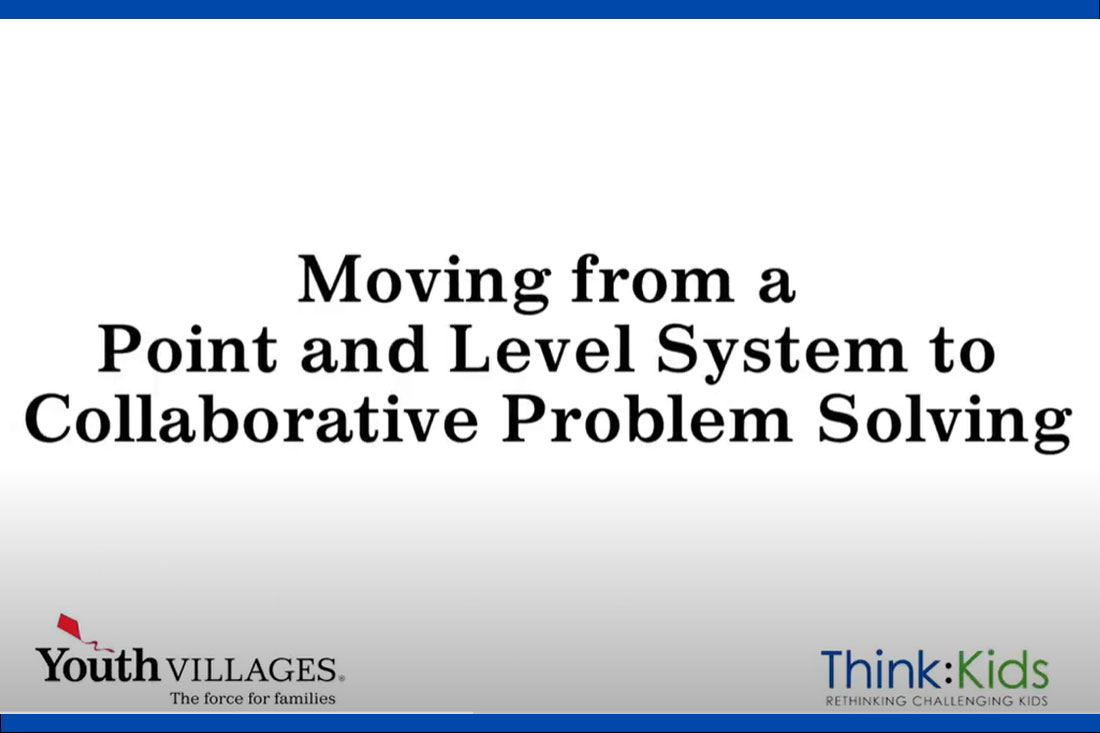
Youth Villages Staff Talk About Collaborative Problem Solving
About Youth Villages: Youth Villages (www.youthvillages.org) provides help for children and young people across the United States who face a wide range of emotional, mental and behavioral problems. We work to find solutions using proven treatment models that strengthen the child’s family and support systems and dramatically improve their long-term success.
Video Transcript:
Hanson Adeyinka, Assistant Director of Residential Service: Level four is our most secure residential facility that we have. We have key cards that allow you access once you get in the building to go through all the different courtyards. So, it’s a more restrictive environment than maybe a level three where you don’t have locks on the cottage doors. The kids can pretty much move freely throughout the campus without staff having to scan a door to enter and depart.
Gilmore Tierra, Program Manager: We have different seasons. At one point, we’ll have a bunch of kids that may struggle with self-harm. We have kids that typically exhibit development behaviors, physically aggressive behaviors; we have some kids who may be on the autism spectrum. It varies.
Hanson: I think it’s greatly increased it. You have to build that rapport with the child, and you can’t just take their points and move on. You have to; if it’s a behavior that needs to be addressed, you have that time to address it. I think a lot of the courtyards have planned time on the schedules where they focus on having Plan B conversations and just spending that time talking with the child.
Gilmore: I think that the report is greater on the courtyard. You can just see it. You can see the change in the TCs (Teacher Counselors), and you can see the way that the kids respond to the TCs. It’s a whole lot of conversation going on. And I think that the TCs can appreciate that because they don’t like for the kids to be angry with them or to have difficulties with the youth throughout the day because they felt like it’s their job to, from the arm because they did this wrong, they moved wrong. So I had to fill them the urn. And now they’re angry at me about it because I did my job now. They feel like they’re able to efficiently do their job because if they can address the issue without doing something that they feel is negative or is associated with negativity. The youth respond differently, and we’re able to talk to these kids and come up with a solution to whatever the problem or issue may be.
Gilmore: I’m happy we’re using CPS. I mean, at first, I think, I think everybody was skeptical about it. Like I said, the culture of the building was points. And if the kids did something, you felt earned it; then you moved on to the next thing. I think that now, we’re able to help the kids work their treatment because that’s what we’re here to do. We’re here to keep the kids safe. We’re managing them, and it’s, it’s efficient. It doesn’t have to be a punitive thing. We’re able to build relationships with the kids. The kids are more willing and open to talk to us, and you can use CPS with the adults too. So it works. It comes in handy because there are several times where I’ve had to have collaborative problem conversations with my staff to figure out what problems they were encountering or why they were having certain issues with kids. And so I think just all around, it’s just beneficial to the culture of YV [Youth Villages] if we’re truly trying to make progress and move forward with helping these kids.
Hanson: I think overall it’s just been a good culture change for us at Youth Villages. Just being able to converse with the children about the issues that we see, or the problems, or the lagging skills. And like she mentioned, it’s I say culture because we’re now utilizing Collaborative Problem Solving with our staff. I think that just alleviates so much anxiety from people when you know that it’s going to be a conversation versus just immediate boom, I’m dropping the hammer on you, boom, I’m taking points, boom, I’m just giving you this write-up. I think it allows for conversation. It allows you to get to root issues of what is the real cause for whatever the unmet expectation is versus just automatically coming in, and I’m going to just come down on you. Building the rapport is eliminating future major crises that could occur. I think any time when you build that rapport between a staff member and a child, there’s an emotional deposit. It’s going both ways, from the staff to the child and also the child to the staff member. And that’s just so crucial when you have those chaotic crisis moments, and being able to pull from those deposits you will help keep things safer. So I think overall, that rapport that’s being built between the staff and the kids.
Edited for clarity.